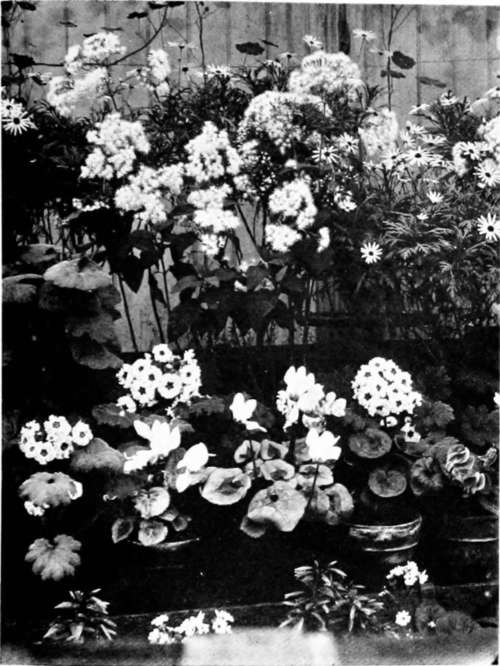Tuberous Begonias
Description
This section is from the book "Indoor Gardening", by Eben E. Rexford. Also available from Amazon: Indoor Gardening.
Tuberous Begonias
This class of Begonias blooms in summer, and rests in winter, the old top dying entirely away. The flowers of most varieties are much larger than those of the fibrous-roofed sorts, and generally much richer in color. Some are double, some single. Some of the double varieties have flowers quite like miniature Roses. The single kinds have very wide petals, and are very showy because of their great size and rich coloring.
The tubers should be procured in spring, and planted in a soil of light sandy loam. Before potting them it is well to sprout them, as it is sometimes difficult to tell which side should be put uppermost. Spread them out on damp moss, or on pieces of old carpet, and keep them moist and warm until sprouts appear. Then put them into pots, just covering the tuber with soil. It is well, at this time, to set a stick by each tuber to tie the stalk to, as it shoots up. Being very soft and brittle, it is easily broken if not given good support. Water moderately.

Chinese Primroses, Cyclamens, And Steyia.
A window with an eastern exposure suits this plant much better than a sunnier one.
When the blooming-season is over-which will be in October, as a general thing-the leaves will ripen and fall off. Allow the soil to become quite dry. When the stalks have fallen from the tubers, set the plants away, in their pots, without disturbing them in any way. Keep them through the winter without water,or, if any is given, let it be in such small quantities that the soil is only very slightly moist-just enough so to prevent the withering of the tubers.
In spring, shake the roots out of the old soil, and sprout them as already advised, after which pot them in fresh soil, as at first. Tubers so treated will remain strong and healthy for years, increasing in size with age, and giving more and more flowers each year.
In color they range from pure white to crimson, vermilion, rose, and yellow. They are among our best summer-flowering plants. No collection ought to be without them.
Continue to:
